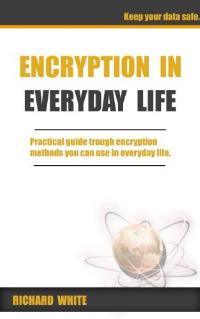Encryption allows you to securely protect data that you don’t want anyone else to have access to. Businesses use it to protect corporate secrets, governments use it to secure classified information, individuals use encryption to securely protect folder contents, emails, chat histories, tax information, credit card numbers, and other sensitive information.
Current encryption standards ensure that files are stored in an safe form whether you are transmitting it over the Internet, backing it up on a server, carrying it on USB or on your laptop. Encrypting your data makes it unreadable to anyone but you or intended recipient.
Reading the encrypted sectors without permission will return random-looking data instead of the actual files.
Data encryption is not a new practice.
Before the digital era, the biggest users of cryptography were governments, particularly for military purposes (to facilitate secret communication).
There are some information that we don’t want other people to have access to:
– Credit-card and Bank-account information
– Social Security numbers
– Private correspondence
– Personal details
– Sensitive company information
Today, encryption is part of everyday vocabulary and is a common practice among individuals.
Encryption in Everyday Life is a practical, pragmatic guide which teaches you different encryption methods you can use in everyday life.
You’ll learn how to:
– Employ full-disk encryption, which protects all your data even if your hardware falls into the wrong hands.
– Encrypting your cloud storage.
– Encrypting your Internet traffic.
– Encrypting online communication, if you want it to remain private, it’s time to start thinking about encryption.
– Encrypting your email.
– Encryption for social networks and open web.
– Encryption in Everyday Life will give you power to keep your data safe.












